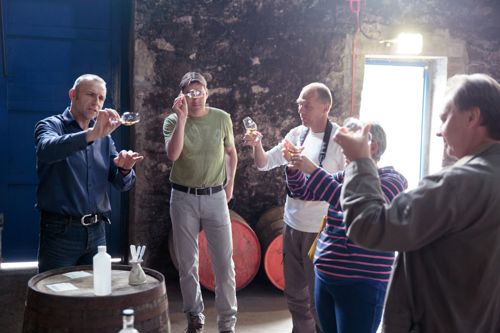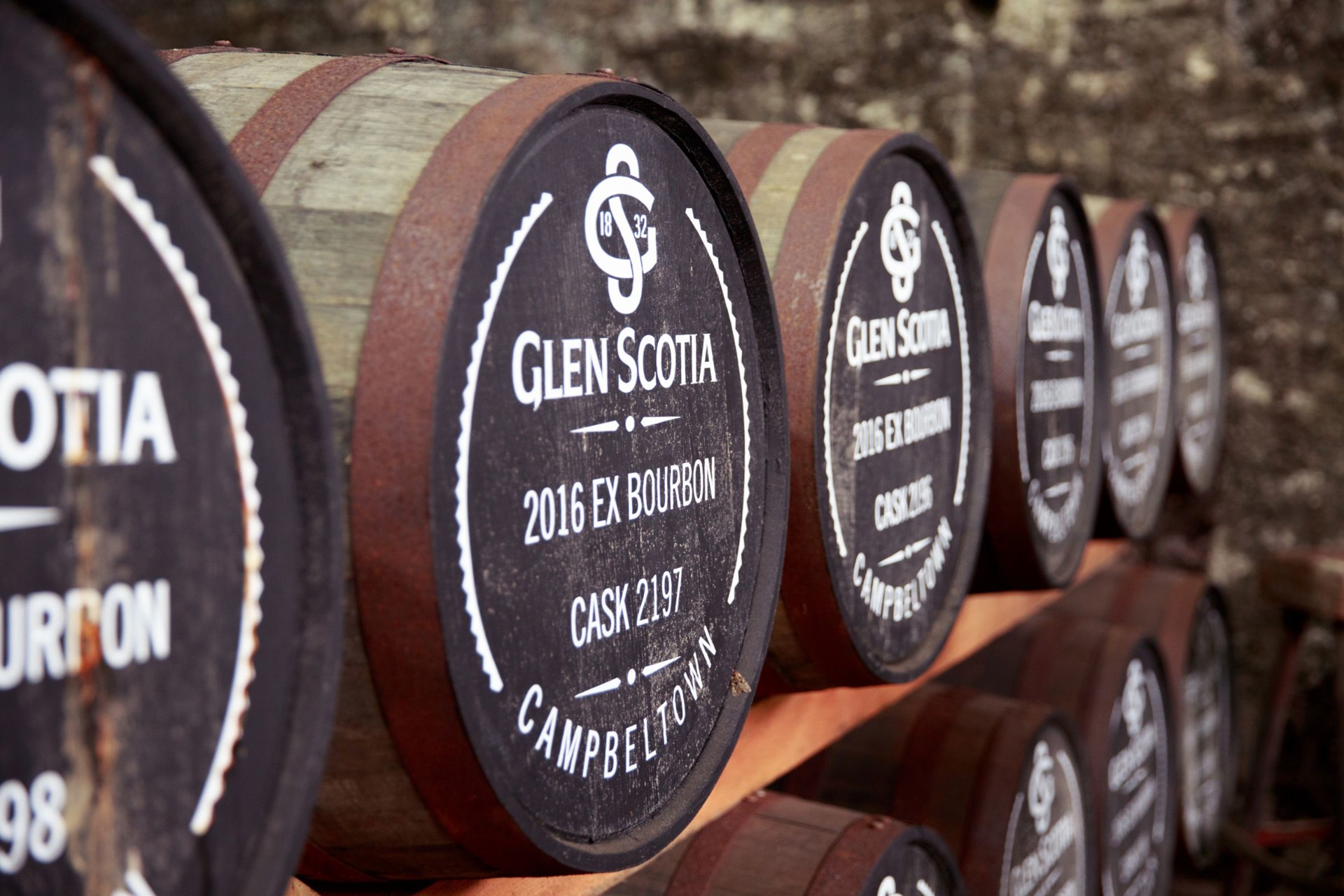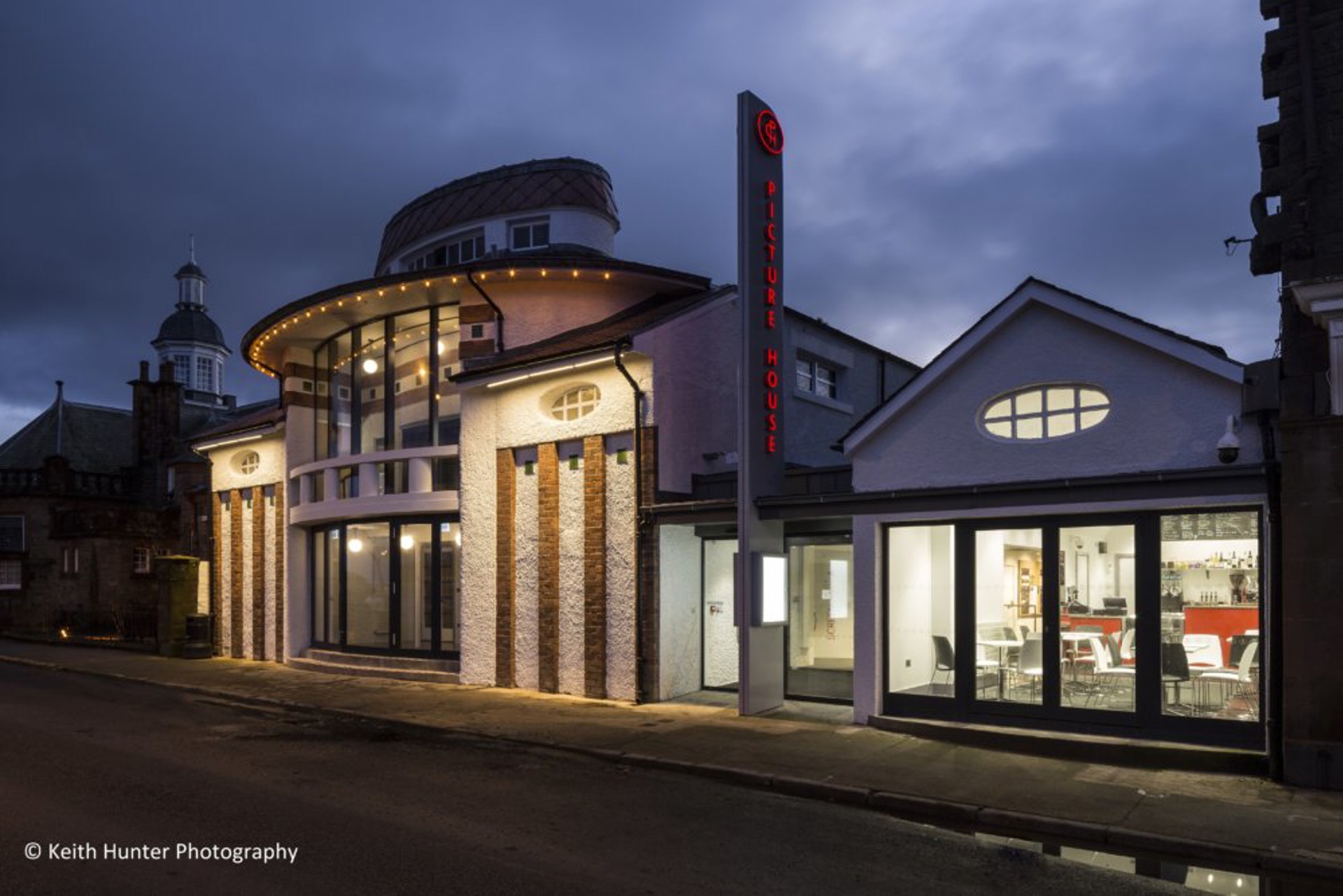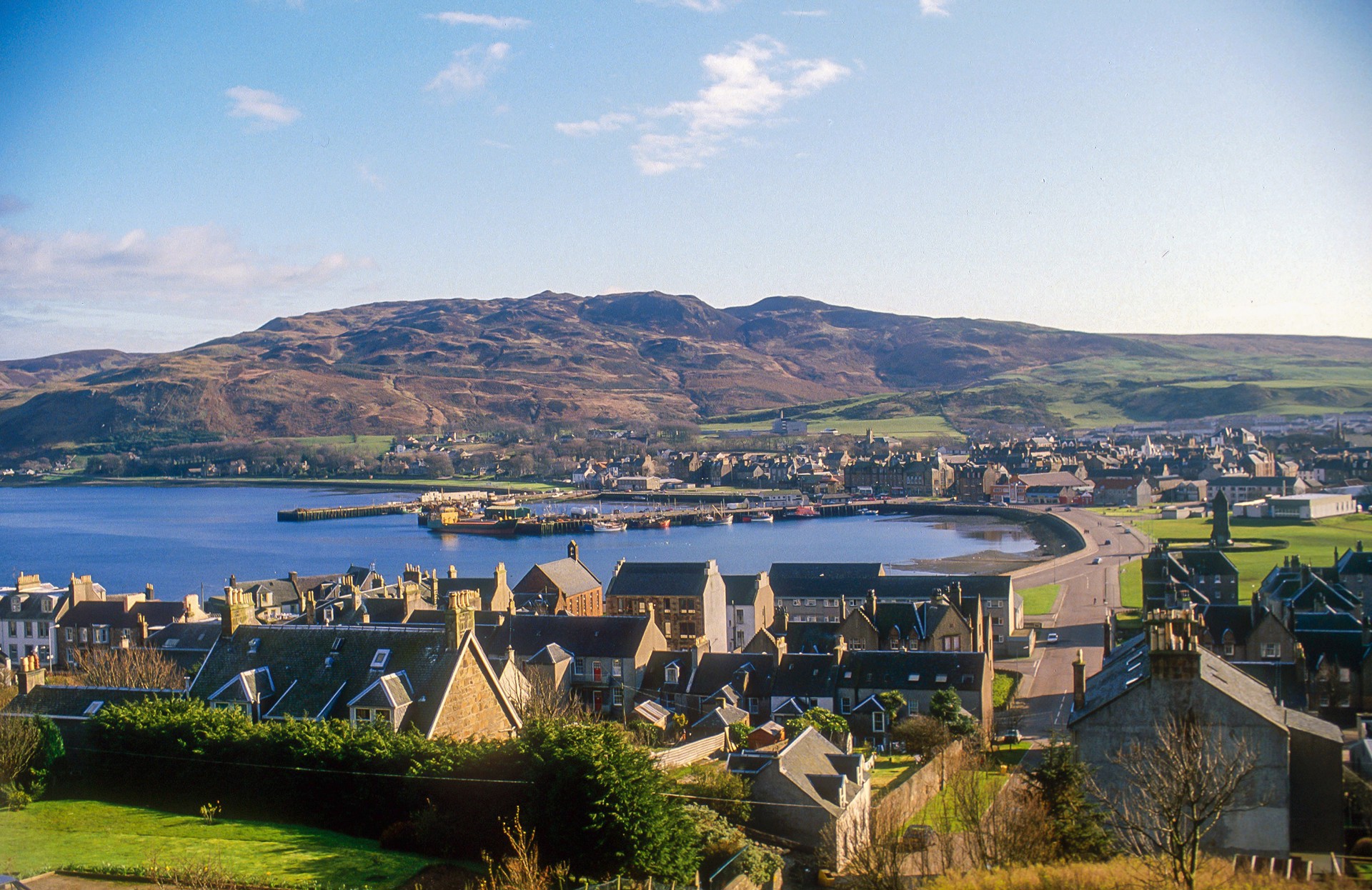Why Campbeltown was the Whisky Capital of the World
It may be the smallest of Scotland’s whisky regions today, but Campbeltown used to be the whisky capital of the world, with more than 30 distilleries in the town. Today there are just three distilleries remaining, Springbank, Glen Scotia and Glengyle's Kilkerran. They’re a small band, but these surviving distilleries are still big players in the whisky world, producing some of Scotland’s best malts. And because of the town’s history and the unique characteristics of the malts, Campbeltown is classified as one of Scotland’s official whisky regions alongside Islay, Speyside, Highlands and the Lowlands.

Head to Glen Scotia Distillery for a whisky tasting tour.
Discover Campbeltown's Distilleries
Campbeltown became a whisky boomtown in the 1800s. All the ingredients were there for the whisky industry, including the fertile fields of Kintyre for barley, peat bogs to supply peat for the malting process, the waters of the nearby Crosshill Loch and coal from Drumlemble mine near Machrihanish to fuel the stills. Most importantly, perhaps, was the natural deep sea harbour. Campbeltown was a bustling port and as Campbeltown’s whisky industry grew, steam took the whisky to the fast-growing markets of Glasgow and on to London and America. By the late 1800s, Campbeltown was a prosperous, flourishing town. Check out the villas on the east side of Campbeltown Bay and you’ll get a taste of the wealth that whisky (and herring) brought to the town.
But it wasn’t to last. Seventeen distilleries closed in the 1920s and, by the end of the decade, only Rieclachan was still distilling. By 1934, Springbank and Glen Scotia had restarted production – but Rieclachan had shut for good. What were the reasons? The demand for the region’s whisky was so great that the distilleries couldn’t keep up and quality began to fall. Speyside became connected to the newly-built railways in the north of Scotland allowing it to boost production. World Wars, prohibition and the Great Depression in America all contributed to Campbeltown’s decline.
Nowadays, Springbank, Glen Scotia and Glengyle's Kilkerran produce whisky with unique characteristics. Campbeltown whiskies are bold. Peat provides the smokiness, while there are strong maritime notes. Experts talk of a whiff of the sea on the nose and a salty, briny flavour on the palate. Springbank malts are probably the most robust, while Glen Scotia malts are lighter with grassy notes. Glengyle's Kilkerran malts are lighter and sweeter, but with the distinctive oily and salty notes you'd expect from a Campbeltown whisky.
Glen Scotia
Founded in 1832, Glen Scotia is one of the smallest whisky distilleries in Scotland. The distillery still maintains much of its original design, including the fermenters, the stillroom and the dunnage warehouse dating from the 1830s. You can choose from a number of tours. Relax in the Victorian-styled shop, learning about the history of Glen Scotia while enjoying a few drams.

Springbank
To get a real sense of Campbeltown’s whisky heritage, take a tour of the historic Springbank Distillery. It’s was founded in 1828 on the site of Archibald Mitchell's illicit still and is now in the hands of his great, great, great, grandson, Hedley G. Wright. It's very traditional and is the only distillery in Scotland to carry out the full production process on the one site. Fully 100% of the traditional floor malting, maturation and bottling is done at the distillery in Campbeltown. There are a number of tours to choose from. You could book a Frank McHardy Tour and spend time in the company of the whisky legend himself. Frank will guide you around a historical tour of Campbeltown and point out key locations of whisky interest, as well as take you on a tour of the distillery. Another option is to enjoy a few drams in the atmospheric Tasting Room.
Glengyle
Mitchell’s Kilkerran (Glengyle) Distillery is known as the ‘newest, oldest distillery’. It originally operated in Campbeltown from 1872 to 1925 and was brought back to life in 2004 by Springbank Distillery. You can take a take a joint tour of Springbank and Glengyle, which is a great way compare the differences between old and new; looking at the historic Springbank site and modern Glengyle site.
Other Things to See & Do in Campbelltown
Take a wander around Campbeltown and you’ll get an insight into the town’s booming whisky past. Tantalising glimpses remain, from faded signs to old buildings. You’ll also find some cracking whisky bars. The Ardsheil HotelWhisky Bar is a real treat for whisky lovers, with over 700 malts to choose from. The Hotel won the Wee Dram Whisky Bar of the Year 2010 and the prestigious Scottish Field Whisky Bar of the Year in 2013 and 2014. Or how about popping into Cadenhead's Whisky Shop and Tasting Room for a fine selection of single malts.
Get out on the water!
There's plenty of choice for adventure on the water in Kintyre! Kintyre Seasports in Campbeltown offers a selection of sailing and powerboating experiences – they're the perfect way to have a great day out and try something new. See Campbeltown from a unique angle and make memories that will last a long time.



